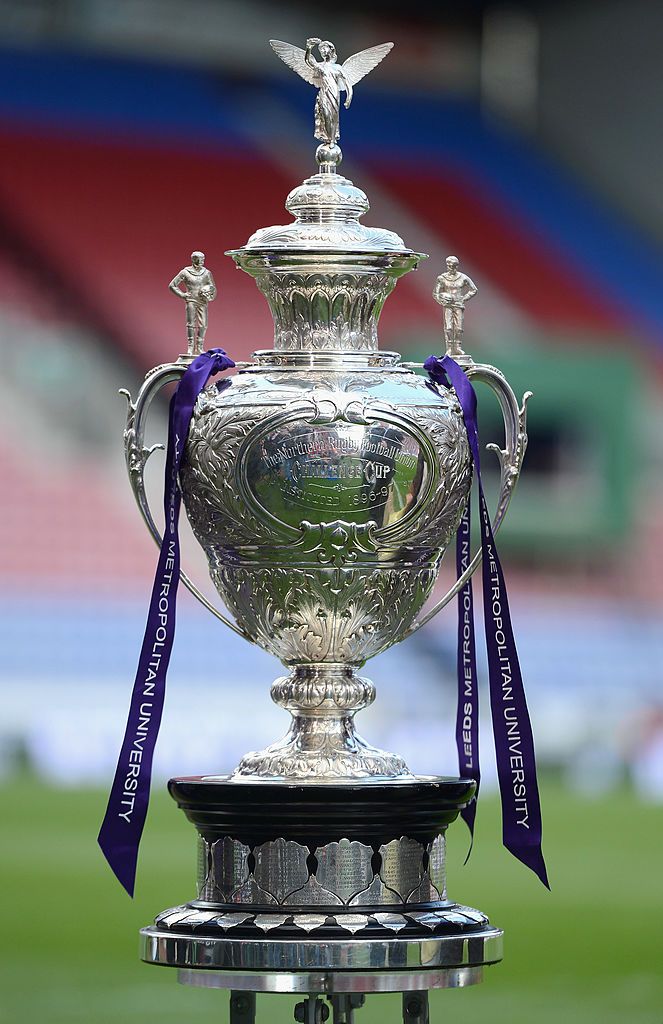
19 October 2024

As the Rugby Football Union celebrates its 150th year, we examine six influential governing bodies and their roles in the history and development of Rugby Union since 1871.
Part 4- The Northern Union

WIGAN, ENGLAND - MAY 12: The Carnegie Challenge Cup trophy at the DW Stadium on May 12, 2012 in Wigan, England. (Photo by Gareth Copley/Getty Images)
The dispute over broken time payments in the late 1880s and early 1890s would lead to one of the most remarkable ruptures in the development of any sport. The split manifested as a point of principle but also could be explained by both class and geography and it was 22 clubs from the neighbouring counties of Lancashire, Yorkshire and Cheshire who decided in the late summer of 1895, that they would be better off going their own way.
A year later, the fledgling body followed the example of Association Football by inaugurating the Challenge Cup. If the RFU had expected the rival organisation to flounder, they were wrong. Within a decade, their leading clubs were operating on a fully commercial basis with professionally contracted players. The game took hold and surpassed the original in places as far away as Australia, Papa New Guinea and, for a time, France.
The Northern Union became the Rugby Football League in 1922 and the RFU's game came to be known as Rugby Union. The promise of professional contracts posed an existential threat to rugby union as players at all levels defected from the amateur code between 1895 and 1995.
League left Union trailing in its wake in several key areas during this period. Administrative work led to the creation of a Rugby World Cup, now Rugby League World Cup, as early as 1954. The progress and acceptance of black players and coaches in Rugby League decades before the same was true of Rugby Union can perhaps be attributed to the games' egalitarian roots.
The repeal of Rugby Union's amateur regulations in 1995 ended the moral split between the two codes and stemmed the exodus of talent from union to league. With the potential to effectively double each games popularity and commercial appeal, there were even some preliminary talks about remerging the two codes.
Though this has yet to materialise, the influence of Rugby League on Rugby Union has not faded. Since 1995, former Rugby League players and coaches have and continue to influence the way Rugby Union is played and coached at the highest level.
See also:
Part 1- The Rugby Football Union
Part 2- The Scottish Rugby Union
Visit our website, book your visit and follow us on Facebook, Twitter and Instagram.